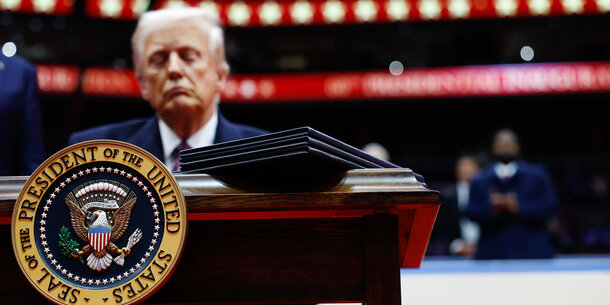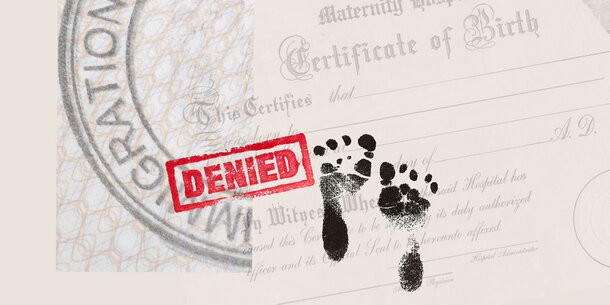Last summer, the Supreme Court struck down race-based affirmative action in college admissions. The ruling set off an ongoing chain of attacks on efforts to advance civil rights and social justice across a broad array of sectors, blocking some and chilling more.
The conservative supermajority’s decision in Students for Fair Admissions relied on the false claim that the Fourteenth Amendment’s Equal Protection Clause was designed to be race neutral or, in the justices’ words, “color-blind.” The Court’s ruling has emboldened right-wing challenges to race-inclusive programs and policies across the country.
The Court ruled that the University of North Carolina’s undergraduate admissions policy violated the Equal Protection Clause, which says that no state shall “deny to any person within its jurisdiction the equal protection of the laws.” The Court embraced the view that the clause prohibits the government from treating people of different races differently. Any such differential treatment, Chief Justice John Roberts wrote in his majority opinion, is “discrimination.” And “eliminating racial discrimination means eliminating all of it.”
Students for Fair Admissions not only departed from 45 years of precedent that allowed universities to consider an applicant’s race as one of many factors in their admissions decisions — it was also based on a historical falsehood. The majority’s approach, which is fleshed out more fully in Justice Clarence Thomas’s concurrence, claims that the Reconstruction Congress specifically designed the Fourteenth Amendment to outlaw all government policies that distinguish among people on the basis of race. (In Thomas’s view, Reconstruction-era efforts to help Black people freed from slavery were focused on their status as formerly enslaved people rather than as Black people.)
On the contrary, as historians explained in a forceful brief (and reiterated in a recent article), the Reconstruction framers wanted to bar laws that subordinated people on the basis of their race. And they wanted to empower the government to enact race-conscious laws that could repair the harms of past racial discrimination and promote equal opportunity. In fact, Congress enacted laws of exactly that kind while it was drafting and passing the Fourteenth Amendment.
For example, Congress enacted measures to ensure Black soldiers, specifically, received the payments they were owed. Likewise, the Freedmen’s Bureau Act provided certain educational programs only to Black citizens. Supporters of equal protection stressed the importance of meeting the specific needs of Black citizens. They distinguished between unfair discrimination and race-conscious efforts to improve the lives of Black people, understanding the need to undo both the effects of slavery and the negative impacts of expressly racist laws on free Black people.
The destructive potential of this approach was made clear by the Court itself, as it extended its analysis in Students for Fair Admissions to invalidate Harvard University’s admissions program under Title VI of the 1964 Civil Rights Act, a federal statute that prohibits discrimination based on race, color, and national origin in programs receiving federal financial assistance. In a concurrence joined by Thomas, Justice Neil Gorsuch pushed for an even more expansive reading, arguing that the prohibition on race discrimination in Title VI is “essentially identical” to the terms of Title VII of the 1964 Civil Rights Act, which deals with employment discrimination. His concurrence all but invited future litigants to bring “reverse discrimination” claims under Title VII and other related statutes using the logic of Students for Fair Admissions. More broadly, the case signaled that the Court would take a harsher stance toward race-conscious policies and practices, providing new incentives for right-wing challenges and broad cover to lower courts that would endorse them.
Right-wing advocates quickly answered the call, challenging civil rights, social justice, and diversity, equity, and inclusion (DEI) initiatives across many sectors. They have invoked Students for Fair Admissions to attack admissions policies in high schools and military academies; to pressure corporations, law firms, judiciaries, and bar associations to drop their DEI programs; as well as to challenge the federal government’s minority contracting schema, local government health programs, and environmental justice programs, among others.
Courts have rewarded this right-wing campaign. For instance, a federal court in Texas ruled in March 2024 that the federal Minority Business Development Agency’s reliance on a list of races and ethnicities to create a presumption of “social or economic disadvantage” when awarding benefits and services violated equal protection. Quoting liberally from Students for Fair Admissions on the law, the district court expounded its own originalist interpretation of the Fourteenth Amendment that aligns with the Supreme Court supermajority’s, arguing that its “proponents . . . advocated for a race-neutral approach” with a “rigid prohibition of race-based preferences,” and that “even benign discrimination cannot be squared with the Equal Protection Clause.”
Similarly, a federal court in Tennessee determined in July 2023 that it was unconstitutional for the U.S. Department of Agriculture and the Small Business Administration to treat small business owners belonging to certain underrepresented racial and ethnic groups as presumptively “socially disadvantaged” when disbursing government contracts. The Tennessee court again cited Students for Fair Admissions, underscoring that “the facts in [that case] concerned college admissions programs, but its reasoning is not limited to just those programs.”
Even the mere threat of adverse court rulings has intimidated many organizations and institutions into abandoning or weakening their DEI initiatives. The examples are legion. The prominent national law firms sued by conservative activists voluntarily opened up their DEI programs to white associates, while major tech companies made significant cuts to their DEI programs and teams. In October 2023, the State Bar of Texas announced that it would rebrand its Diversity and Inclusion Committee as an Outreach and Engagement Committee. And, in January 2024, the Supreme Court of Florida terminated the Diversity and Inclusion Committee of the Florida Bar Association as part of its annual budget negotiations with the bar.
Students for Fair Admissions’ rewriting of equal protection is undoing decades of progress toward a more racially equitable society. It is neither isolated nor accidental. Instead, the ruling is part and parcel of the larger originalist project in which the Supreme Court’s conservative supermajority is complicit. In one area of law after another, the Court is rolling the Constitution back to a fictional past in service of its regressive political agenda. The effects on our rights have been seismic — and they’re not over yet.






